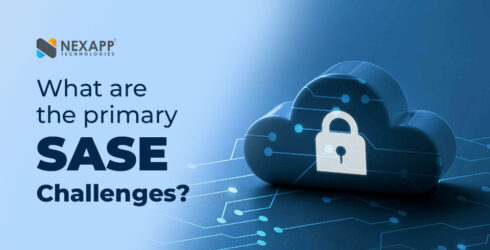
SASE (pronounced Sassy) is known to be the technology that will transform the way we understand security. We have previously spoken about what exactly SASE means. But a little flashback.
Gartner was the first to coin the term in 2019, as an emerging cybersecurity concept. They defined SASE as “SASE capabilities delivered as a service-based upon the identity of the entity, real time context, enterprise security/compliance policies and continuous assessment of risk/trust throughout the sessions. Identities of entities can be associated with people, groups of people (branch offices), devices, applications, services, IoT systems or edge computing locations.”
Enterprises and businesses who are considering adopting SASE, need to consider that this will be a paradigm shift for them. Even with SASE being the go-to technology for many and its many benefits may seem as businesses are achieving nirvana, SASE comes with its own set of drawbacks and challenges.
IT organizations and enterprises that aren’t completely prepared for a change this magnitude may face some roadblocks along the way while adopting SASE.
What are some of the major challenges businesses face while adopting SASE?
- SASE Architecture – The SASE architecture provided must provide businesses with top application performance. It should be scalable, not only for data plane, but for the control and management of planes, as well as for cloud-native solutions.
- Integration and interoperability – It is crucial that SASE providers have well integrated features. SASE end-point agents should simplify deployments with other agents and cloud gateways of various flavors.
- Cultural challenges of SASE – Many organizations have had a separate security and networking team. But SASE warrants these teams to revisit their roles and responsibility. It can be a jarring experience which requires teams to collaborate and relearn the importance of cooperation.
- Vendor Selection – A step that requires great care. Enterprises need to make sure that a SASE solution fits their needs and encompasses all security and networking solutions. They should familiarize themselves with the vendor’s abilities to provide specific features that the enterprise is looking for.
- Navigating the tooling landscape – SASE is an amalgamation of various tools and methodologies, which sometimes can get confusing for businesses to navigate. Failing to perform proper tool consolidations can lead to tool sprawl. disjointed capabilities and an incoherent enterprise architecture. Which leads to team members having many side effects like burnout, fatigue and frustrations, leaving enterprise security at risk of failing.
SASE is not just a product or a service, it is a revolutionary change that is creating a whirlwind. It is a change of process that requires a combination of networking and security specialists. While adopting SASE, it is important that businesses thoroughly go through the SASE solution testing to ensure it fits the organization security and deployment needs.
To learn more about SASE, head over to Nexapp Technologies.


